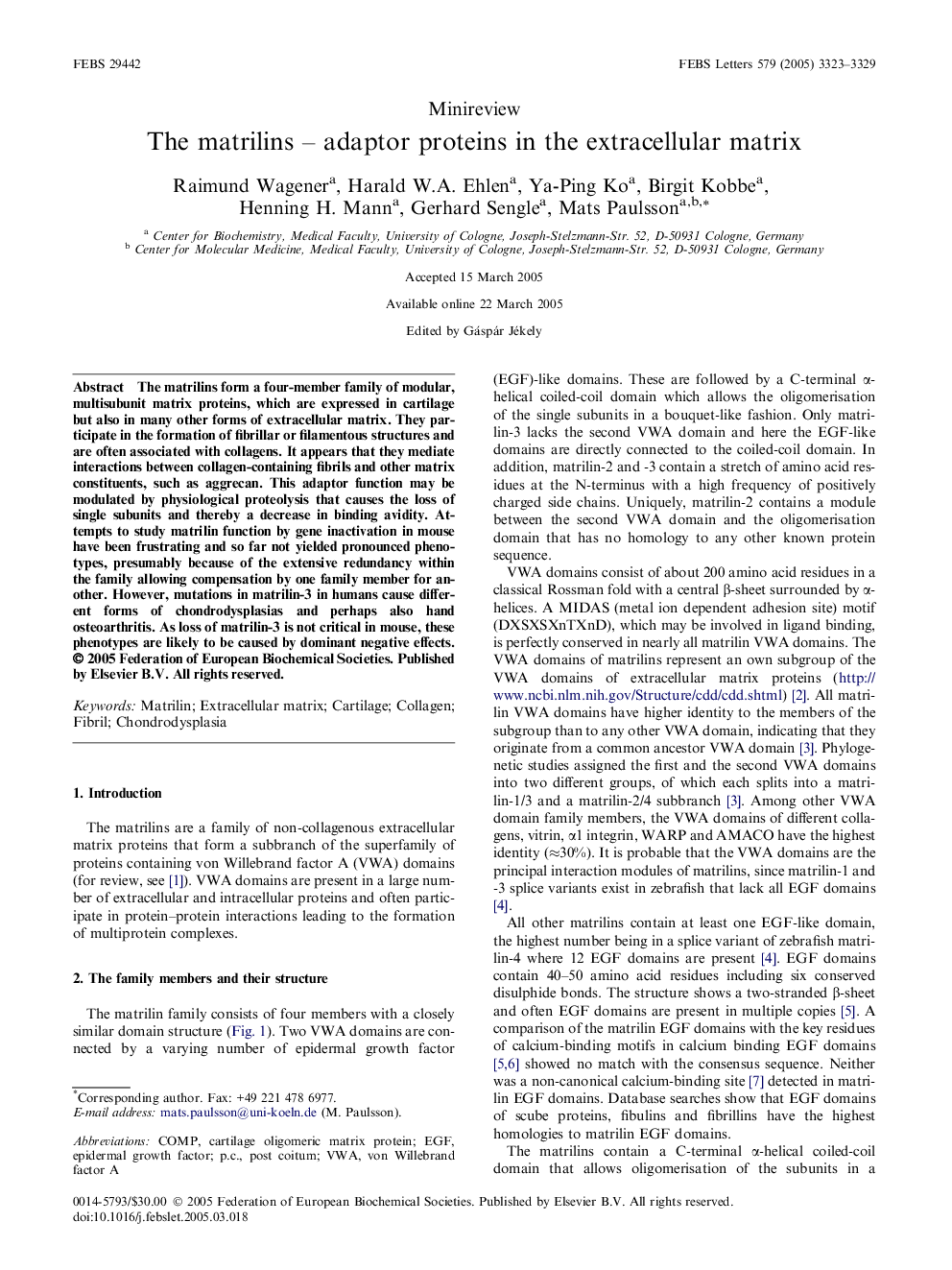| Article ID | Journal | Published Year | Pages | File Type |
|---|---|---|---|---|
| 2052857 | FEBS Letters | 2005 | 7 Pages |
The matrilins form a four-member family of modular, multisubunit matrix proteins, which are expressed in cartilage but also in many other forms of extracellular matrix. They participate in the formation of fibrillar or filamentous structures and are often associated with collagens. It appears that they mediate interactions between collagen-containing fibrils and other matrix constituents, such as aggrecan. This adaptor function may be modulated by physiological proteolysis that causes the loss of single subunits and thereby a decrease in binding avidity. Attempts to study matrilin function by gene inactivation in mouse have been frustrating and so far not yielded pronounced phenotypes, presumably because of the extensive redundancy within the family allowing compensation by one family member for another. However, mutations in matrilin-3 in humans cause different forms of chondrodysplasias and perhaps also hand osteoarthritis. As loss of matrilin-3 is not critical in mouse, these phenotypes are likely to be caused by dominant negative effects.
